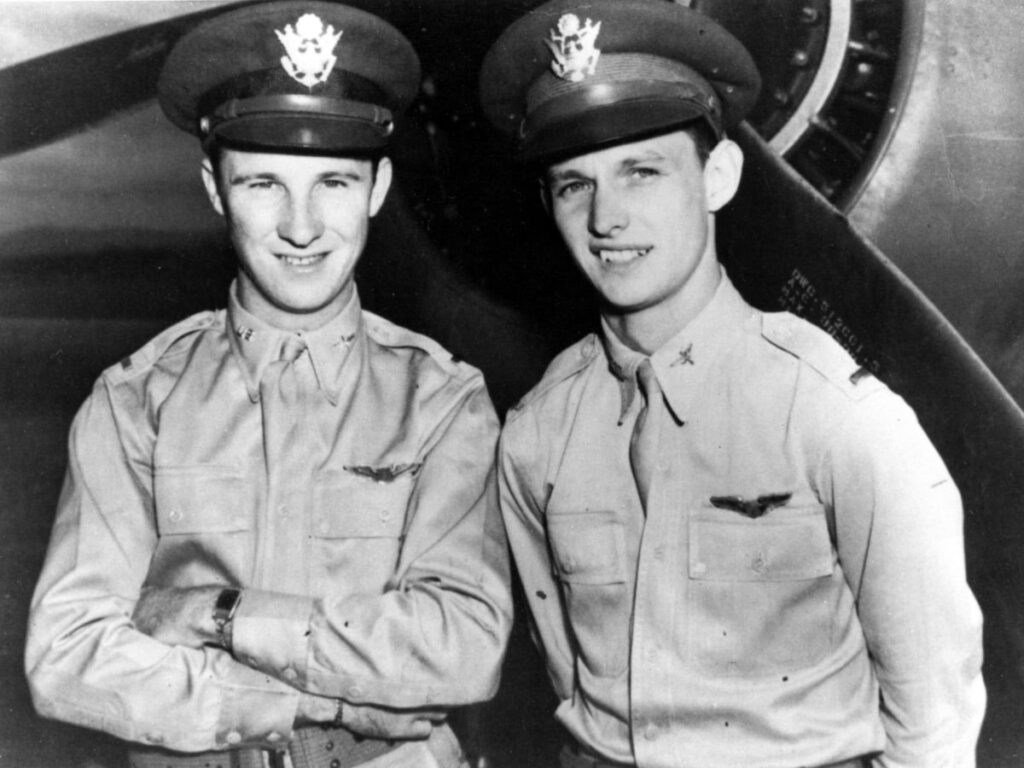The Pearl Harbor attack was a surprise aerial attack by the Japanese on the US Naval base in Oahu, Hawaii, on December 7, 1941. The strike increased tensions between the United States and Japan during the time. But did you know that two hero pilots were denied the medal of honor despite their initiative and bravery on that day?
George S. Welch and Kenneth Taylor were both second lieutenants in the US Army Air Corps. They received the Distinguish Service Cross but were denied the Medal of Honor since they took off without proper authorization.
The Heroes of Pearl Harbor
George S. Welch and Kenneth Taylor heard a distant shooting as the pair discussed the benefits of going for an early morning swim and the winner of the final hand-collected his money.
The lieutenants called ahead to have their Curtiss P-40 Tomahawk fighters loaded and fueled, then climbed into Taylor’s automobile, machine-gun fire from the second wave of Japanese attackers kicking up dust. During the drive to Haleiwa, they hit speeds of 100 mph until they reached their base.
The airmen were ordered to patrol near Barbers Point after airborne, and they shot down numerous Japanese planes before returning to the airfield for more fuel and ammunition.
We had to argue with some of the ground crew. They wanted us to disperse the airplanes and we wanted to fight.
George S. Welch, US Army Air Corps
Welch’s machine gun had become jammed. Taylor had been shot in the arm and leg and had been instructed not to fly again that day. Despite this, the two pilots prepared to return to the skies.
Before Welch’s guns could be unlocked or Taylor’s wound receive first aid, the second wave of 15 Japanese planes swept in but he and Welch took off immediately.
Blake Clark, Journalist
A total of five Air Corps pilots got their planes off the ground. Lieutenant Sanders led a group through the skies when a formation of six Japanese bombers was spotted. They chased them off and smoked an enemy plane into the sea.
We went down and got in the traffic pattern and shot down several planes there. I know for certain I shot down two planes or perhaps more; I don’t know.
Kenneth Taylor, US Army Air Corps
Welch and Taylor were officially credited with seven of the 29 Japanese planes shot down during the raid, four in their first foray and three in their second. Taylor later testified before a joint congressional committee examining the Japanese attack on Pearl Harbor, explaining his role during the attack.
Gordon W. Prange observed in his classic account of the Pearl Harbor attack, At Dawn We Slept, that Haleiwa was the only American airfield to emerge unscathed from the war. Some speculated that this was because the Japanese were unaware of its presence. It was more than probable because Welch and Taylor fought back vigorously against the assault. (Source: History Net)
What Happened to George S. Welch and Kenneth Taylor?
Welch was nominated for the Medal of Honor on account of his bravery, but he was denied receiving the said award because his commanding officer claimed he had left the base without authorization. Welch ended the war with a total of 16 victories. On October 11, 1954, he was killed while test-flying the F-100 Super Sabre fighter plane.
During his 27 years of active duty, Taylor progressed through the Alaska Air National Guard ranks, rising to the position of brigadier general. He worked as an insurance underwriter after leaving the military. Taylor died in 2006, at the age of 86, in Tucson, Arizona. (Source: History Net)
